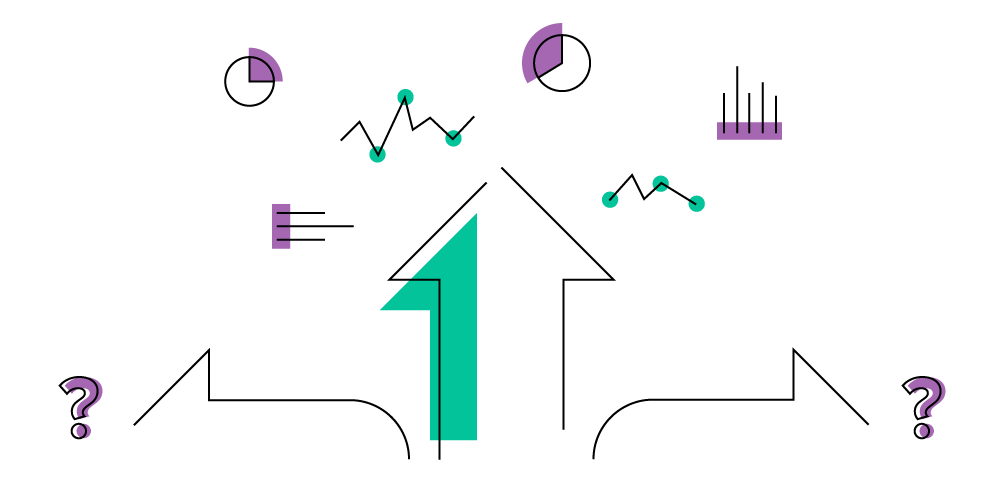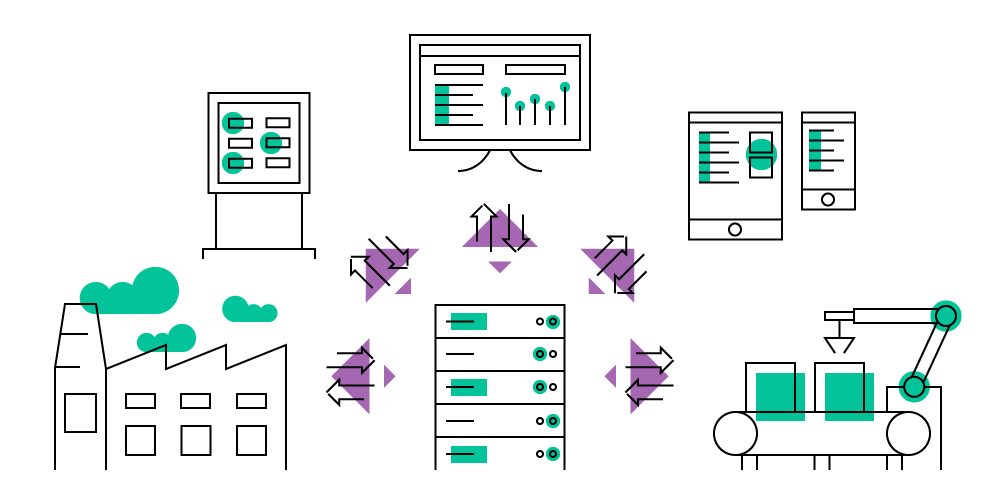Get 4 Monumental Wins by Aligning OT and IT
As IIoT and other data-centric concepts are realized in businesses and on factory floors all over the world, the practice of aligning operational technology (OT) and information technology (IT) is becoming more and more necessary. Leading technology-research company Gartner defines OT-IT Integration as “the end state sought by organizations (most commonly, asset-intensive organizations) where instead of a separation of IT and OT as technology areas with different areas of authority and responsibility, there is an integrated process and information flow.”
This push to access more data from every part of an organization has many advantages once it is implemented. It’s easy to see why this is an area of interest for many companies and industry leaders; aligning OT and IT lays the groundwork to produce incredible benefits for organizations and professionals working in both fields. Let’s look at how organizations can reap huge benefits and build a more successful future by aligning their OT side with their IT side in four major areas.

Benefit No. 1: Better Decision-Making
When machines and devices on the production floor are not connected to an IT network infrastructure, other parts of the enterprise are not able to take advantage of their real-time data and operational intelligence. But when OT and IT are aligned, more high-quality information is available cross-organizationally, which ultimately leads to improved decision-making. For example, imagine if everyone in your organization had live-updating dashboards so they could see key performance indicators (KPIs) at a glance.
An oil pipeline is an optimal environment where OT and IT can converge to form something great. On any given installation, there can be over 10,000 miles of pipeline, thousands of PLCs and devices, and miles of wiring. In a typical operational environment, only critical operational data is used for monitoring and safe operation, while the vast majority of data is left out in the field. OT-IT alignment can help gather and elevate all of the pipeline data to the enterprise level. Additionally, information about the health status of all devices on the network aids in on-the-job decisions such as whether to send a repair vehicle or to solve the problem locally.

Benefit No. 2: Smaller Cost, Greater Value
Cost reduction is another great benefit of OT-IT alignment. Connecting OT to IT and enterprise-level functions can be expensive using traditional methods. However, with this practice, OT can benefit from the affordability that IT enjoys thanks to the low cost of maintenance and licensing. Since IT focuses on scalability, solutions like these that leverage an unlimited licensing model can help reduce costs and alleviate restrictions.
Additionally, when data can be easily accessed in real-time, OT and IT can share data across an organization. This functionality facilitates better and faster decision-making, prevents costly errors, and enables the implementation of cost-saving measures such as predictive maintenance. By integrating OT and IT systems, an overhauled architecture delivers greater value to the organization by optimizing the way information is shared and providing greater returns on their investment.

Benefit No. 3: Lower Risk
Connecting OT and IT lowers risk for organizations in a number of ways. Traditionally, floor operators have to manually read, collect, and input data in order to share it around the plant floor, then share it with the entire enterprise. Regardless of any regulatory checks and balances in place, this method of sharing information leads to a significantly higher likelihood of human error. By leveraging technologies from IT, you get the higher data accessibility, stability, and fluidity found in IT infrastructure added to an OT environment. This reduces the opportunity for human error since data is shared directly from one point to another.
Upgrading operational systems or replacing plant-floor equipment presents a huge risk; however, by integrating a SCADA system into an IT infrastructure, you can access a larger volume of high-quality data without impacting the existing SCADA system. Through technologies such as SQL databases, you can access more data without compromising the operation of the SCADA system, and reduce the risks of downtime and revenue loss.
Some SCADA systems are classified as mission-critical, and connecting them to other systems or the Internet is a major risk. With contemporary standard IT security protocols, OT professionals can rest assured that their SCADA system will not be compromised. IT often uses bank-level security technology such as SSL, which establishes an encrypted link between a client and a server. Furthermore, IT security practices such as client authentication and auditing systems help manage users and roles. Organizations then have the ability to control who can access certain systems, what information users can see, and view users’ activity, all with the click of a button.

Benefit No. 4: Standardization
With IT’s expertise in standardization, organizations can leverage clearly defined standards to improve compatibility and interoperability. Connecting several proprietary systems can be a headache and can incur a high cost, which severely limits a company’s ability to scale such solutions.
With open standards, proprietary technology is a thing of the past. Utilizing open standards helps make integration easier, and allows organizations to easily scale their systems without impacting the overall performance. Technologies like cloud services and virtual machines can host plant or manufacturing-floor servers, reducing on-site equipment and easily connecting remote systems. Organizations can add more to their internal architectures without the hindrances of traditional solutions.
The convergence of OT and IT is opening accessible data to all levels of an organization and yielding great benefits. These benefits alleviate pain points in four important areas of great concern to businesses: decision-making, cost, risk, and standardization. As the OT-IT convergence continues, organizations will benefit greatly from the resulting technological innovations and performance improvements.
If you’re interested in hearing more benefits and examples of OT-IT alignment, check out our webinar, “Bringing OT & IT Together,” featuring Don Pearson and Travis Cox from Inductive Automation, and Arlen Nipper from Cirrus Link Solutions. Also, if you’ve got any thoughts or stories about how OT and IT teams can work together more harmoniously, please share them in the comments.
